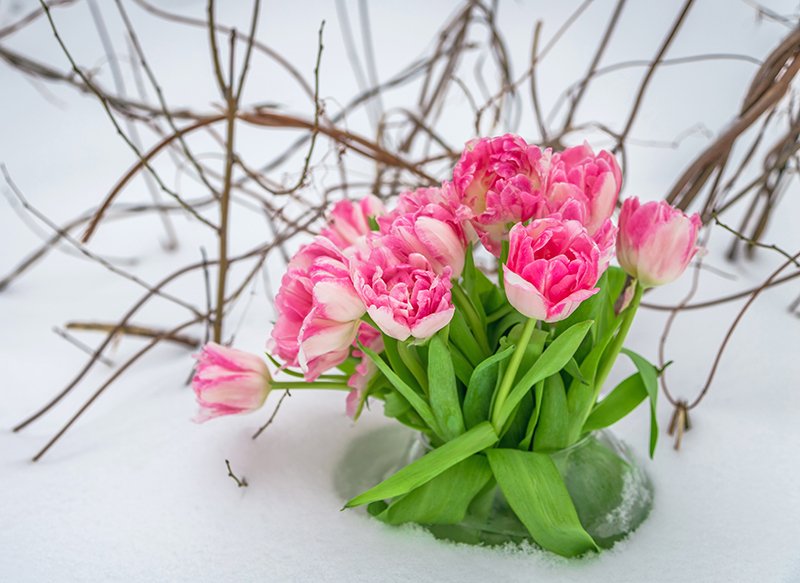Unlock the Secrets: 8 Lesser-Known Facts About Sunflowers
Posted on 14/08/2025
Unlock the Secrets: 8 Lesser-Known Facts About Sunflowers
Sunflowers (Helianthus annuus) are universal symbols of happiness, positivity, and summer's golden touch. While most people know these cheerful blooms for their tall stems and iconic yellow petals, there is a world of hidden wonders behind their sunny faces. Are you ready to delve beyond the surface? In this comprehensive guide, we'll unravel eight lesser-known facts about sunflowers that will deepen your appreciation for these vibrant plants.
The Myth and Majesty: Introduction to Sunflowers
Sunflowers have a captivating history spanning thousands of years and multiple continents. Revered by ancient cultures, cherished in modern gardens, and celebrated in art, the sunflower's story is as complex as it is beautiful. Yet, even today, most people only scratch the surface of what makes these flowers so unique.
If you think you already know everything about the sunflower, think again. This article unveils eight secrets not commonly known--even among gardening enthusiasts!

1. Sunflowers Don't Always Face the Sun (Heliotropism Explored)
It's long believed that all sunflowers move their heads to follow the sun across the sky--a phenomenon called heliotropism. While this is true for young, developing sunflower buds, the mature flowers settle with their faces to the east. This adaptation maximizes pollination efficiency, as flowers that face east warm up faster in the morning, attracting more pollinators like bees.
- Young sunflowers track the sun from east to west during the day.
- Once mature, they stop moving and permanently face east.
- This eastward orientation increases reproductive success.
Why Do Mature Sunflowers Face East?
Researchers at University of California, Davis discovered that eastern-facing blooms heat up faster after sunrise. As a result, more pollinating insects are attracted early in the day, giving these sunflowers a marked advantage.
2. Every Part of a Sunflower Is Useful
The multi-purpose nature of sunflowers is astounding. Ancient peoples, notably in North America, made use of every part of the plant for food, medicine, and even construction.
- Seeds: Eaten raw, roasted, pressed for oil, or used as animal feed.
- Petals: Used in natural dyes and teas.
- Stalks: Traditionally used for building material and paper production.
- Leaves: Utilized as fodder for livestock.
- Roots: Sometimes brewed into herbal remedies.
Today, sunflower oil is a staple in global kitchens and skincare routines. Even the leftover "cake" after oil extraction is a valuable high-protein animal feed.
3. Sunflowers Were Domesticated Over 4,500 Years Ago
While many associate sunflowers with Van Gogh's paintings or midwestern American fields, few realize that Native Americans domesticated sunflowers over 4,500 years ago--long before corn and beans!
These early farmers bred sunflowers for larger seeds and higher oil content. The plant played a critical role in their diet and culture, used for everything from food and dye to ceremonial purposes.
Sunflower's Global Spread
- Spanish explorers brought sunflowers to Europe in the 16th century.
- From Europe, sunflowers spread to Russia, where they became a major crop.
- Russian breeders created the giant, oil-rich varieties we know today.
Fun Fact: The sunflower is the national flower of Ukraine and the state flower of Kansas.
4. There Are Over 70 Different Sunflower Species
Most people imagine a classic yellow bloom, but the sunflower genus (Helianthus) actually includes more than 70 species. These species vary wildly in color, size, and form.
- Some species grow just a few feet tall, while others tower up to 15 feet.
- Blooms range from pale lemon to deep burgundy.
- Wild native sunflowers are often multi-branched with smaller flowers.
- Some perennial sunflowers survive for years in one spot.
Popular Cultivated Varieties
Gardeners and farmers love experimenting with sunflower diversity. Today, you'll find varieties like the dark red 'Moulin Rouge', petal-less 'Teddy Bear', or even bicolor types. Such diversity reflects the sunflower's robust genetic background.
5. Sunflowers Can Absorb Toxic Metals from Soil
Did you know that sunflowers serve an important environmental purpose? Sunflowers have the remarkable ability to absorb toxic elements such as lead, arsenic, and radioactive metals from contaminated soils--a process called phytoremediation.
- Sunflowers were planted after the Chernobyl and Fukushima nuclear disasters to help clean radioactive soil.
- They draw toxic substances up through their roots, storing them in their tissues.
- This property makes them valuable in ecological restoration projects worldwide.
So, sunflowers are true nature's heroes, not just pretty faces!
6. The Largest Sunflower Ever Recorded Was Over 30 Feet Tall
Sunflowers are famous for their height, but the records are truly staggering. The tallest sunflower ever recorded reached an astonishing 30 feet 1 inch (9.17 meters), grown by Hans-Peter Schiffer in Germany in 2014.
- Standard sunflowers typically range from 5-10 feet tall.
- Some varieties, like 'Russian Giant' or 'Mammoth', are bred for height and enormous flower heads.
- Getting a sunflower this tall requires excellent soil, ample sunlight, and lots of water.
If you plan on growing your own giants, be prepared with supports to keep these topple-prone titans upright!
7. Sunflowers Follow the Fibonacci Sequence
Have you ever noticed the mesmerizing spiral patterns in the heart of a sunflower? These intricate designs aren't random: they are living examples of the Fibonacci sequence, a series of numbers where each number is the sum of the two preceding ones (1, 1, 2, 3, 5, 8, 13, etc.).
- The arrangement of seeds allows the most efficient packing, maximizing the number of seeds in a flower head.
- Fibonacci spirals ensure each seed gets the space and light it needs.
- This natural efficiency is called phyllotaxis.
Such elegant mathematics not only makes for beautiful blooms but also ensures the sunflower's reproductive success.
8. Sunflowers Hold Powerful Symbolism Worldwide
Beyond their striking appearance, sunflowers carry immense cultural and symbolic weight in societies across the globe. Their meanings are diverse and inspiring:
- Happiness and Positivity: Their sun-like appearance evokes joy and warmth.
- Loyalty and Longevity: Sunflowers stand tall and strong, symbolizing steadfastness.
- Spiritual Seeking: In some cultures, turning toward the sun is seen as a metaphor for spiritual aspiration and enlightenment.
- Peace and Resistance: In Ukraine, the sunflower stands as a symbol of peace and hope during difficult times.
- Inspiration in Art: Think of Van Gogh's iconic sunflower paintings, which reflect resilience and beauty amid adversity.
In modern times, gifting sunflowers can convey hope, comfort, and unwavering support.
Sunflowers: More Than Meets the Eye
These uncommon sunflower facts shine a light on the hidden depth and value of this beloved plant. From ancient origins to complex mathematics, and even environmental salvation, the humble sunflower is among nature's most remarkable inventions.
Quick Recap: 8 Lesser-Known Sunflower Facts
- Only young sunflowers track the sun--adults look east!
- Every part of a sunflower is useful and used in various industries.
- Sunflowers were first domesticated over 4,500 years ago in North America.
- There are more than 70 unique sunflower species.
- Sunflowers help cleanse toxic soils via phytoremediation.
- The record for tallest sunflower is over 30 feet!
- Sunflowers' seed arrangements follow the Fibonacci sequence.
- Sunflowers carry rich, positive symbolism around the globe.

How to Appreciate and Grow Sunflowers in Your Life
Ready to bring some of nature's sunshine into your world? Growing sunflowers is easier than you might think:
- Pick the right variety for your space--giant, classic, or dwarf sunflowers.
- Plant seeds in full sun and well-drained soil in spring after danger of frost has passed.
- Keep soil moist for best germination, then water moderately as they grow.
- Stake tall varieties to prevent wind damage.
- Enjoy their cheerful blooms and bountiful seeds.
Whether you're a gardener, nature lover, artist, or simply an admirer from afar, knowing these secret facts about sunflowers will enrich every encounter you have with these radiant giants.
Final Thoughts: Unlock the Secrets of Sunflowers
As you walk through gardens, fields, or see sunflower art on your next outing, remember: there's far more to these striking blooms than meets the eye. From their ancient heritage to their quirky biology and environmental heroics, sunflowers are true marvels of the plant world. Now that you know their secrets, share them, grow them, and let every sunflower remind you of nature's hidden wonders.
Did you enjoy learning new and surprising sunflower facts? Share this article and let the sunshine spread!
Latest Posts
Ensure Your Poinsettias Flourish Beyond the Holidays
Unveiling Tricks to Enhance Poinsettia Longevity
Ultimate Guide to Low Maintenance Office Plants







